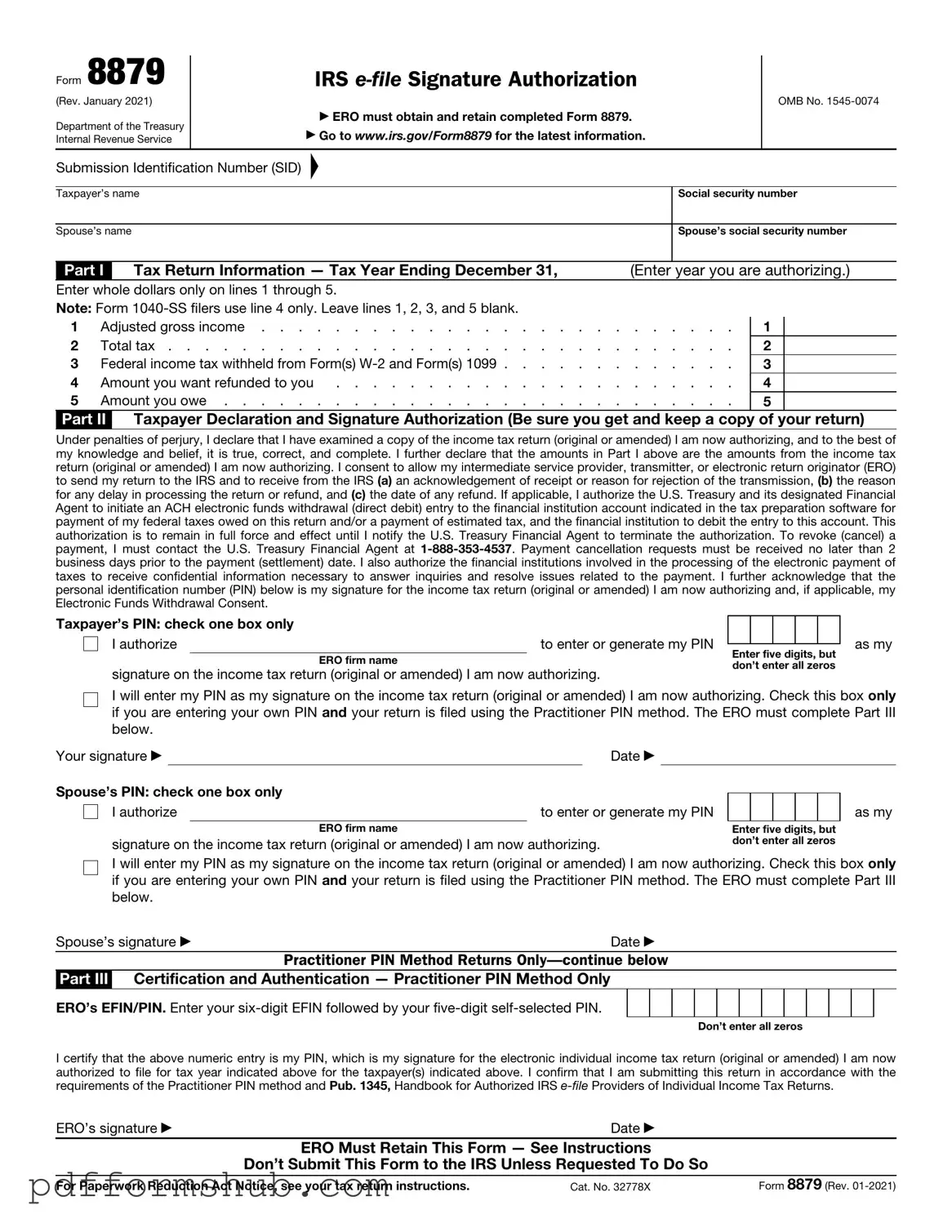Fill in Your IRS 8879 Form
The IRS 8879 form is a crucial document used to authorize an electronic return originator to file a taxpayer's income tax return electronically. This form serves as a declaration of the taxpayer's intent to file and confirms the accuracy of the information provided. Understanding how to properly fill out and submit this form is essential for a smooth tax filing process.
Ready to get started? Fill out the form by clicking the button below.
Customize Form
